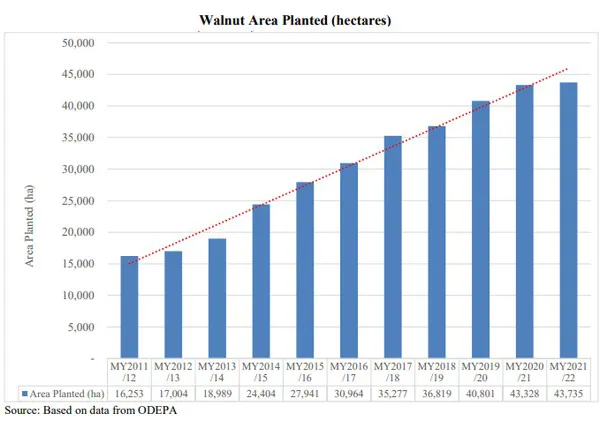For marketing year (MY) 2022/23, Chile will see an estimated 165,000 metric tons (MT) of walnut production, a 7.8 percent increase from MY 2021/22 following an increase in area planted and higher yields. Walnut exports are projected at 162,500 MT in-shell basis, which represents a 7.6 percent increase over MY2021/22. For MY 2022/23, Post projects that almond production will total 11,400 MT, a 3.6 percent increase from MY 2021/22, based on increasing area planted and growing yields. Almond exports will total 8,250 MT, a 3.1 percent increase from MY 2021/22. Chilean almond consumption is expected reach 7,900 metric tons. The United States remains Chile’s top supplier of almonds with a 98 percent market share.
The USDA estimates area planted to increase by 1.8 percent in in MY 2022/23 and reach 44,500 ha. Walnut area planted reached 43,375 ha in MY 2021/22 a 0.1 percent increase over MY 2020/21. The expected growth is in line with historic changes, as area planted has grown steadily since MY 2011/12. Notably, since MY 2020/21, growth in area planted slowed due to a decrease in revenues for Chilean walnut exporters because of increasing production, processing, and transport costs.
Despite the recent decrease in revenues, demand for Chilean walnuts is strong and industry contacts anticipate continued long-term growth. Walnut area planted is in the central-south part of the country between the Valparaiso region and Maule regions. The top production region is the Metropolitana region, which accounts for 37.6 percent of the area planted. Area planted grew by 16.4 percent during the last three years.
Click here to read the full report.
Source: apps.fas.usda.gov

